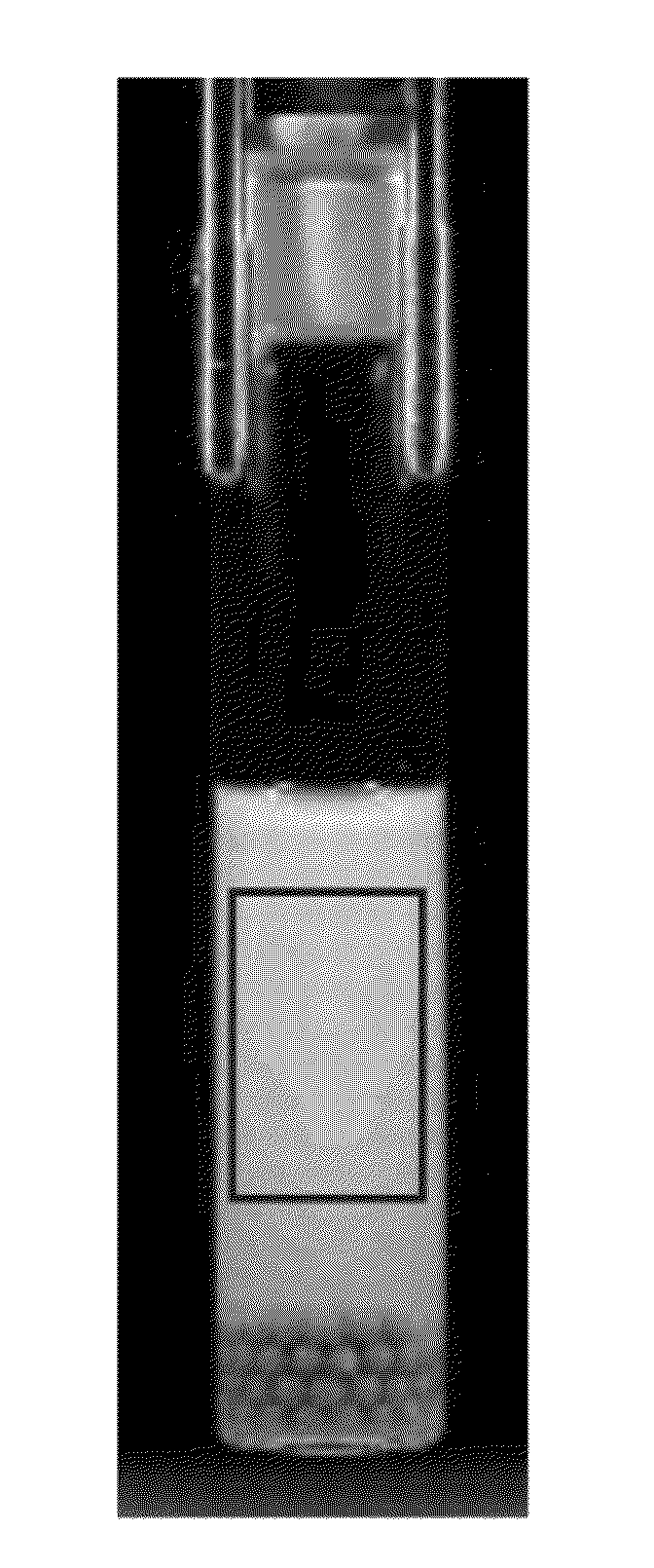Direct quantitative colorimetric measurement of liquid foam
a colorimetric measurement and liquid foam technology, applied in the field of foaminess characterization, can solve the problems of high surface tension of liquid, inaccurate foaminess measurement, and unreliable foaminess measurement, and achieve high throughput workflow, quantitative accuracy, and the effect of determining the effect of foaming
- Summary
- Abstract
- Description
- Claims
- Application Information
AI Technical Summary
Benefits of technology
Problems solved by technology
Method used
Image
Examples
examples 1 to 3
[0109]Use High Throughput Workflow Procedure (A) with a foamable liquid that is an aqueous polyurethane (PU) dispersion and test substances that are Byk 028 defoamer, and select ROI as illustrated in FIGS. 1a and 1b to give color change data (delta E) for Examples 1 to 3. The Byk 028 defoamer is 1.25 wt % in the PU dispersion based on weight of PU plus water. FIGS. 1a and 1b show test liquid foam formulation before shaking (FIG. 1a) and two minutes after shaking (FIG. 1b) as described in Example 1. FIG. 2 shows color change (delta E) for Examples 1 to 3 before shaking (short bars, left-hand sides) and after shaking (tall bars, right-hand sides).
examples 4 to 33
[0110]Use High Throughput Workflow Procedure (A) with a foamable liquid that is an aqueous polyurethane dispersion containing either test substances that are (combination of TEGO Airex 902W and TEGO Foamex 822, 1:1) or Byk 028 defoamer (FIGS. 3a and 3b) or no test substance (FIG. 3c), and select ROI in a manner similar to that illustrated in FIGS. 1a and 1b to give color change data (delta E) for Examples 4 to 33. Examples 4 to 13 contain 0.5 wt % Byk 028 defoamer in the PU dispersion based on weight of PU plus water. Digital color images of vials of Examples 4 to 13 are shown in FIG. 3a. Examples 14 to 23 contain 0.5 wt % (TEGO Airex 902W and TEGO Foamex 822, 1:1) defoamers in the PU dispersion based on weight of PU plus water. Digital color images of vials of Examples 14 to 23 are shown in FIG. 3b. Examples 24 to 33 contain no defoamer. Digital color images of vials of Examples 24 to 33 are shown in FIG. 3c.
[0111]FIGS. 3a to 3c respectively show, from left-to-right in each, test ...
example a
[0112]Use High Throughput Workflow Procedure (A) without beads and with a foamable liquid that is an aqueous polyurethane dispersion containing 0.5 wt % TEGO 902W in the PU dispersion based on weight of PU plus water, and ZIRCONOX® beads. Select ROI in a manner similar to that illustrated in FIGS. 1a and 1b to give color change data (delta E) for Example A.
[0113]For comparison purposes, in a non-invention Comparative Example A repeat Example A except without the beads.
[0114]FIGS. 4a to 4d show before-and-after comparisons without beads in non-invention Comparative Example A and showing foam-generating effect with beads in Example A (FIGS. 4c and 4d).
[0115]As shown by the Examples, the invention foaminess characterization methods independently are reflective of, and quantitatively accurate for determining a, degree of foaminess of test liquid foams per se. Such invention foaminess characterization methods advantageously measure a characteristic of degree of foaminess of the test liqu...
PUM
 Login to View More
Login to View More Abstract
Description
Claims
Application Information
 Login to View More
Login to View More - R&D
- Intellectual Property
- Life Sciences
- Materials
- Tech Scout
- Unparalleled Data Quality
- Higher Quality Content
- 60% Fewer Hallucinations
Browse by: Latest US Patents, China's latest patents, Technical Efficacy Thesaurus, Application Domain, Technology Topic, Popular Technical Reports.
© 2025 PatSnap. All rights reserved.Legal|Privacy policy|Modern Slavery Act Transparency Statement|Sitemap|About US| Contact US: help@patsnap.com



